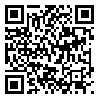
 1, Seyedeh Shahrzad Mahdavi Nezarati
1, Seyedeh Shahrzad Mahdavi Nezarati 
 , Fariba Heshmati
, Fariba Heshmati 
 , Samira Jahangiri
, Samira Jahangiri 
 , Zohreh Zarei
, Zohreh Zarei 

Background and Aim: Candida species are among the most common causes of opportunistic fungal diseases. Among Candida species, Candida albicans is responsible for most infections. Having many strains, C.albicans is highly polymorph. C. dubliniensis is very similar to albicans species both morphologically and physiologically. For an infection to occur, cell wall proteins play an important role as they enable yeasts to adhere to host cells and begin pathogenesis. Therefore, we decided to extract these proteins and examine them through molecular methods of protein analysis. Finally we came up with the idea of a modified staining in our analysis.
Materials and Methods: Initially cell wall proteins of two C. albicansstrains (CBS 562 & PTCC6027) and one C. dubliniensis strain (CBS 7987) were extracted by using a solution of beta-mercaptoethanol and ammonium carbonate. After dialysis, SDS gel electrophoresis was performed on the protein extract. Bands were then visualized by using three different staining methods among which one method was modified by us.
Results: By using Coomassie Brilliant Blue staining method, proteins with molecular weight of 42, 66.2 and 200 kDa were detected. By using Silver staining method, proteins with molecular weight of 21.5, 28.5 and 37 kDa were detected. However, using combined staining methods visualized more bands resulting improved detection.
Conclusion: To answer many questions about fungal diseases, fungi cell wall proteins are necessary to be examined. A simple method to enhance such molecular studies is the use of a modified staining method that combines both Coomassie Brilliant Blue and Silver staining.
| Rights and permissions | |
 |
This work is licensed under a Creative Commons Attribution-NonCommercial 4.0 International License. |
